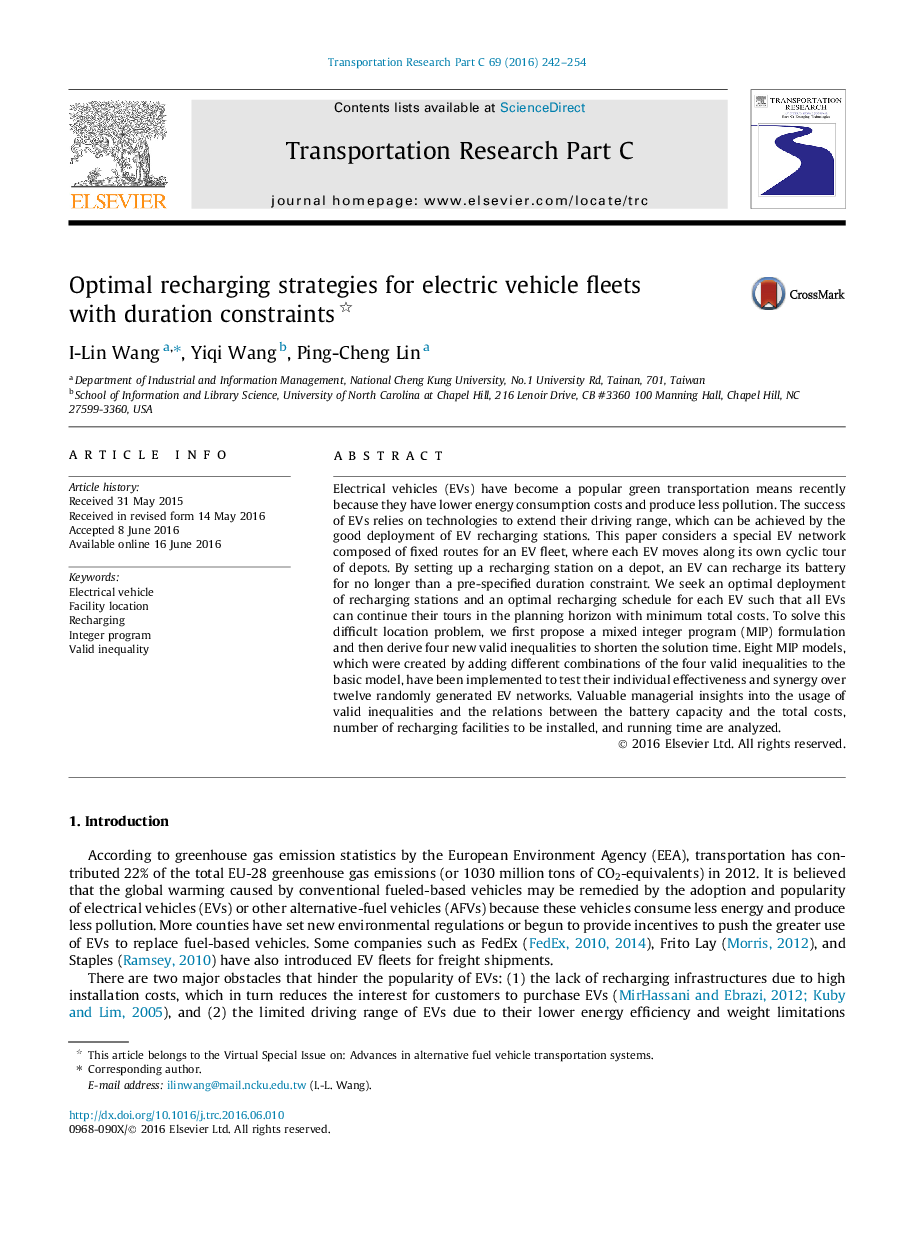| Article ID | Journal | Published Year | Pages | File Type |
|---|---|---|---|---|
| 524729 | Transportation Research Part C: Emerging Technologies | 2016 | 13 Pages |
•We model the optimal facility location problem for recharging stations as well as the optimal EV recharging schedules by MIP.•Each EV route is fixed, as commonly seen in logistics or bus companies.•New valid inequalities are derived and tested to shorten the running time.•8 MIP models are implemented to test 12 randomly generated EV networks.•Comparative performance and sensitivity analyses provide good managerial insights.
Electrical vehicles (EVs) have become a popular green transportation means recently because they have lower energy consumption costs and produce less pollution. The success of EVs relies on technologies to extend their driving range, which can be achieved by the good deployment of EV recharging stations. This paper considers a special EV network composed of fixed routes for an EV fleet, where each EV moves along its own cyclic tour of depots. By setting up a recharging station on a depot, an EV can recharge its battery for no longer than a pre-specified duration constraint. We seek an optimal deployment of recharging stations and an optimal recharging schedule for each EV such that all EVs can continue their tours in the planning horizon with minimum total costs. To solve this difficult location problem, we first propose a mixed integer program (MIP) formulation and then derive four new valid inequalities to shorten the solution time. Eight MIP models, which were created by adding different combinations of the four valid inequalities to the basic model, have been implemented to test their individual effectiveness and synergy over twelve randomly generated EV networks. Valuable managerial insights into the usage of valid inequalities and the relations between the battery capacity and the total costs, number of recharging facilities to be installed, and running time are analyzed.
